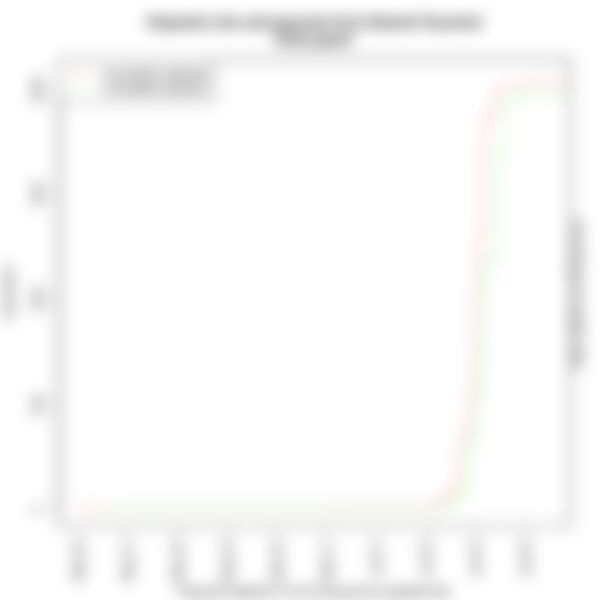EDIT Aug 2 2021: u/guyfawkesfp has stated that there are no plans for a round 2 of Satoshi Pyramid, as explained here. Also, my assumption about how the operator fee is calculated was evidently incorrect, as pointed out by u/Functioning_Idiot under my post on Reddit and confirmed in the post by u/guyfawkesfp . The total fees sum up to about 200 BCH, not the 103 BCH that I had initially calculated.
In about 24 hours, Satoshi Pyramid is set to start another 60-day round of exponential speculation. Satoshi Pyramid is a Bitcoin Cash-based pyramid scheme that is completely honest about being a pyramid scheme. You double your money or come out empty-handed. In order for a Satoshi Pyramid "investor" to get a payout, someone else must decide to invest after them and deposit money into the scheme. The risk for the later investor is that the flow of people depositing into the scheme may dry up, so no one might pay, in turn, for their payout. Details about the rules are explained in guyfawkesfp's read.cash article and this snapshot of satoshipyramid.com
Classifying Satoshi Pyramid
Satoshi Pyramid is definitely a scheme, but what type of scheme is it? Satoshi Pyramid can be classified as a game of perfect information within the framework of game theory. What does this mean? A game has perfect information if every player has all the information about the current state of the game at every point that they need to make a decision. Chess is a game of perfect information since information about the position of the pieces is available each time a player needs to make a move. Rock-paper-scissors is not a game of perfect information, however, since at the point of having to make a decision about which move to play, a player does not know the move that their opponent intends to make. Card games like poker and blackjack are games of imperfect information that also add a random element to the game state through card shuffling.
Satoshi Pyramid is a game of perfect information since information about the moves that other players have made are available to all players on an immutable, public, distributed ledger. There is also no random element. This seems to be an improvement on a typical Ponzi scheme in which investors are not even aware that they rely on later investors to ensure their payouts.
Scam alert?
So, it's a scheme, but is it a scam, as it has been called? Defining "scam" may be difficult since the word means different things to different people. The Merriam-Webster Dictionary defines a scam as "a fraudulent or deceptive act or operation." Is Satoshi Pyramid fraudulent or deceptive? One way to answer this question is to determine whether the operator paid out to depositors when the operator promised to.
A depositor is supposed to be paid double their deposit (minus a 10 percent fee) at the point in time at which the cumulative amount of BCH that has been deposited is double the cumulative amount of BCH that was deposited when the deposit made their initial deposit. Current depositors pay for the payouts of past depositors. So the question can be asked: Did depositors receive their payouts when they were supposed to be triggered?
Fortunately the BCH blockchain provides all the information necessary to answer this question. It shows amounts of BCH being sent from players' addresses into the Satoshi Pyramid deposit address and, in turn, BCH being sent from the Satoshi Pyramid payout address to players' addresses when payouts have been triggered. With the elbow grease of a little coding and the help of Bitcoin.com's blockchain API, all information can be extracted.
Digging into the blockchain data

Figure 1 displays the results of this data extraction. The two lines in the chart are the cumulative amount of BCH that was deposited and paid out over time. Besides few large late deposits that happened a few days ago, almost all action occurred from May 26 to June 5. Let's zoom in there.

Figure 2 is a little better, but the very early parts of the lines are still compressed and obscured. By its very nature Satoshi Pyramid is exponential since deposits are to be doubled. Setting the vertical axis on a logarithm scale unwinds the exponential relationship and yields the best view of the data.

From Figure 3 it is apparent that there were batched payouts regularly executed as the cumulative amount of BCH deposited rose. The official rules of the SatoshiPyramid.com website states, "SatoshiPyramid deposits are made into a secure cold wallet system. For security reasons payouts may take up to 12 hours to process."
Although a bit tricky, it is possible to match specific payout transactions to their corresponding deposit transactions on the BCH blockchain. With a few lines of code I was able to link 96 percent of payouts to their deposits.
The average amount of time between a deposit reaching its payout threshold and the payout transaction being confirmed on the blockchain was about 5.5 hours. The time interval ranged from 1 hour to 23.5 hours. In 95 percent of cases Satoshi Pyramid achieved its stated goal of paying out to depositors within 12 hours of reaching the payout threshold.
"Market" crashes
Around June 4, large deposits to Satoshi Pyramid suddenly ceased. In certain asset markets, bubble phenomena can develop in which traders buy an asset not because of its inherent value but because their belief that they will be able to sell it for more money than the price at which they purchased it. This is the "greater fool" theory: I may be a fool to buy this asset at such a high price, but I believe I can sell it at a higher price to an even greater fool. The cession of large deposits on June 4 was akin to an asset bubble bursting or a market crash. Suddenly, the sentiment turned against the frenzy of depositing ever-larger amounts.
The bottom line
In total, 330 deposits summing to 2062 BCH were made in round 1 of Satoshi Pyramid. There were 161 payout transactions totaling 1856 BCH. The quantities deposited ranged from a few satoshis to 185 BCH, with the average being 6.25 BCH and the median deposit amount at 0.21 BCH.
As for the subset of the deposits that did not result in a corresponding payout due to the market crash, the summary statistics are similar to the overall set of deposits as a whole: the maximum single deposit that did not mature into a payout was 146 BCH. The average was 6.21 BCH and the median was 0.20 BCH. The total amount of BCH deposited that did not result in a corresponding payout was 1031 BCH.
The fees obtained by the operator are 10 percent of the deposits that matured. (The Satoshi Pyramid rules state that any deposits that did not mature into a payout would be rolled over to initiate the next round.) The fees sum to 103 BCH, which at the time of writing was valued at about 50,000 USD. The operator has stated that "These fees will be used to fund the development of Bitcoin Cash applications and infrastructure."
The code used to extract the data is available here; the resultant datasets are here; charts are here. I believe the data analysis presented here to be accurate, but there is always the possibility of a mistake in the code; I welcome any corrections. A shorter version of this article was posted to reddit.com/r/btc.
Disclosure statement: I have no association with the operator of Satoshi Pyramid. I deposited a small amount of BCH early in round 1 to test the Satoshi Pyramid system and subsequently received a payout when the threshold was reached.



Really enjoyed reading this and will study your resources. Great material, thank you.